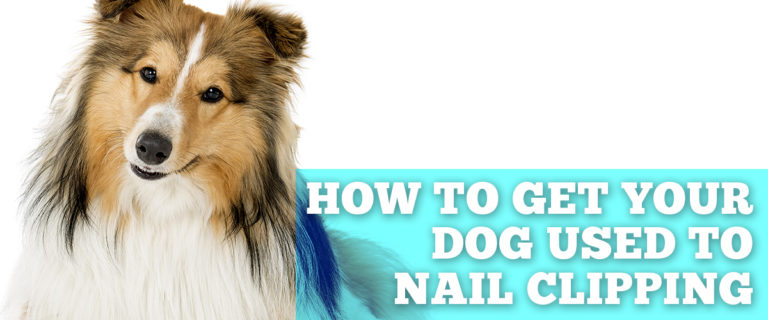Spring has sprung in many parts of North America and the UK. Woo! For many of us, that means showing off our feet that haven’t seen the light of day since before Halloween. Therefore, a trip to the spa or nail salon for a pedicure is in order. If you’re a dog, however, well-groomed paws are in style no matter the season. Unfortunately, like many hoomans, some pups don’t like getting their nails clipped or having their feet touched. Not to worry! In this article, we’ll give you some tips on how to get your dog used to nail clipping. That way, you can give your best friend a pawdicure anytime they need it.
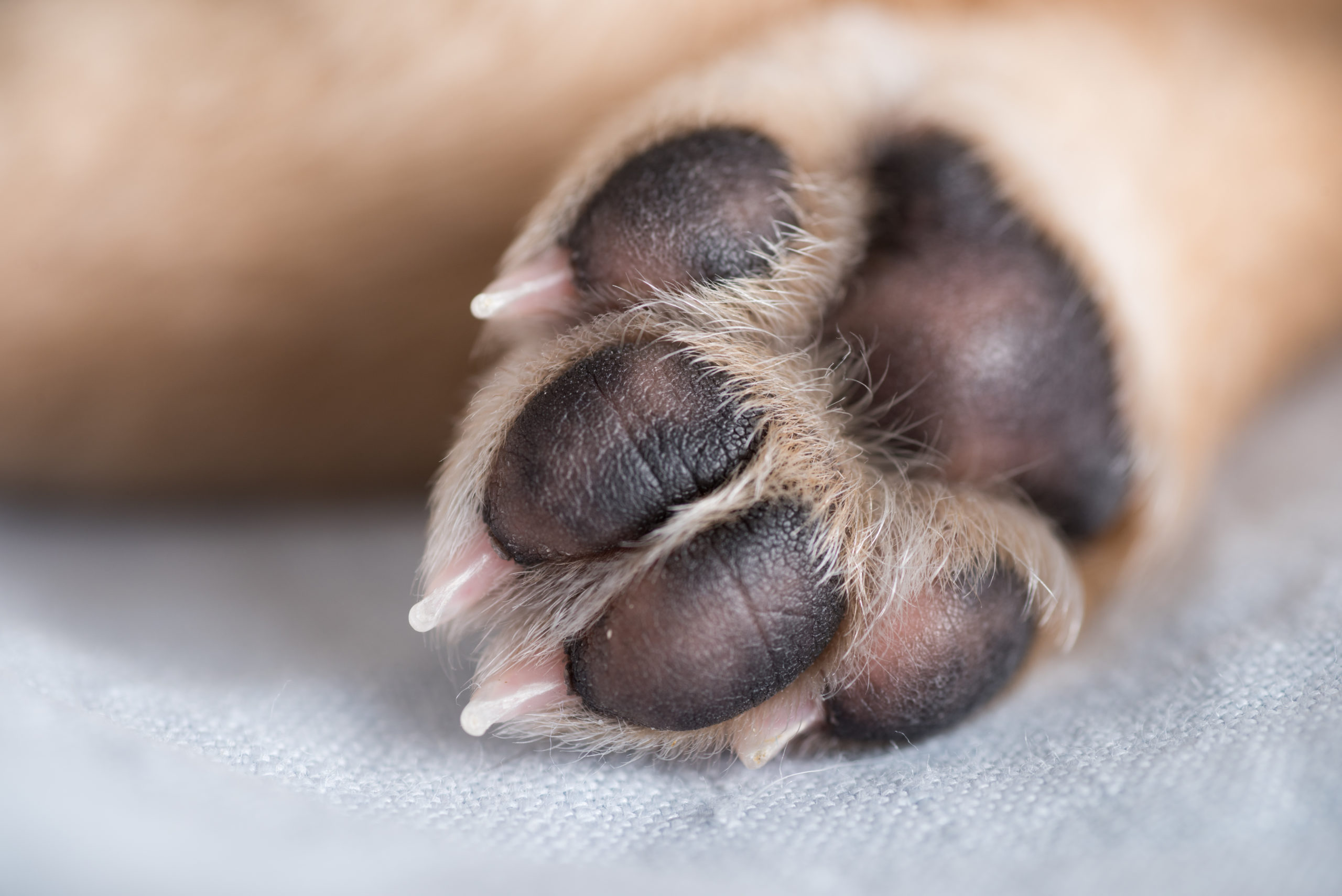
Long Toenails are Bad News
For hoomans, toenail length is a personal preference. If our toenails are too long, wearing shoes will be uncomfortable. We all know if your feet hurt, there are many second and third-order effects such as back pain. Even though most of our canines don't wear shoes, long pupper nails have similar consequences.
Painful Feet
The primary symptom of long toenails is painful feet. When a dog’s toenails contact hard surfaces, like a sidewalk or your kitchen floor, the hard surface pushes the nail back up into the nail bed. This either puts pressure on all the toe joints or forces the toe to twist to the side. What happens next is those adorable toe beans become very sore, even arthritic.
Poor Pawsture
The second consequence of long toenails is more dangerous. Just like hoomans, members of the animal kingdom rely on information from nerves in their feet to move through the world and process gravity accurately.
Here’s where your best friend’s anatomy gets interesting. During non-domesticated times, wild dogs ran long distances while hunting and worn their nails short, naturally. The only time their toenails would touch the ground was when climbing a hill. Therefore, via evolution, a dog's brain is programmed to associate toenail contact with being on a hill, and they shift their body posture accordingly.
If his toenails are long, and they are climbing an imaginary hill, his hind limbs provide a secondary compensation necessary to avoid a face plant.
No matter if you’re a dog or a hooman, poor posture is hard to maintain, causes arthritis, and affects joints, muscle structure, and tone. This is why both parties have difficulty getting in vehicles, climbing stairs, and standing up.
Broken Nails
Long nails lead to breakage…we’re not telling you anything you don’t already know. Since pups have blood vessels in their nails, like many other animals, when they split or break, it can be excruciating.
Scratch and Dent
When hoomans have long or broken nails, they catch on fabrics or may scratch your skin. Here’s another thing we have in common with our best friend: if a dog has a broken nail, if they paw at you, it could break your skin accidentally. Similarly, with long or broken nails, canines can damage your furniture, flooring, etc. (So we really can't tell you enough how getting your dog used to nail clipping is a total must.)
The solution: nail trims! However, we know it’s not that simple, or we wouldn't dedicate an article to this topic. Fear of nail trims is a very common issue dog guardians, and their BFFs face. Just like anxiety in other situations, the fear ranges from a dislike to terror, depending on the dog and pawrent. For some pet pawrents, the only way to trim doggo’s nails is to take them to the groomer or vet clinic, which is a pain in the booty. Therefore, many wave the white flag and allow their dog’s nails to stay long. We don’t want you to think that’s the only solution, so here are our recommendations to ensure nail trims are a regular part of your pup’s routine.
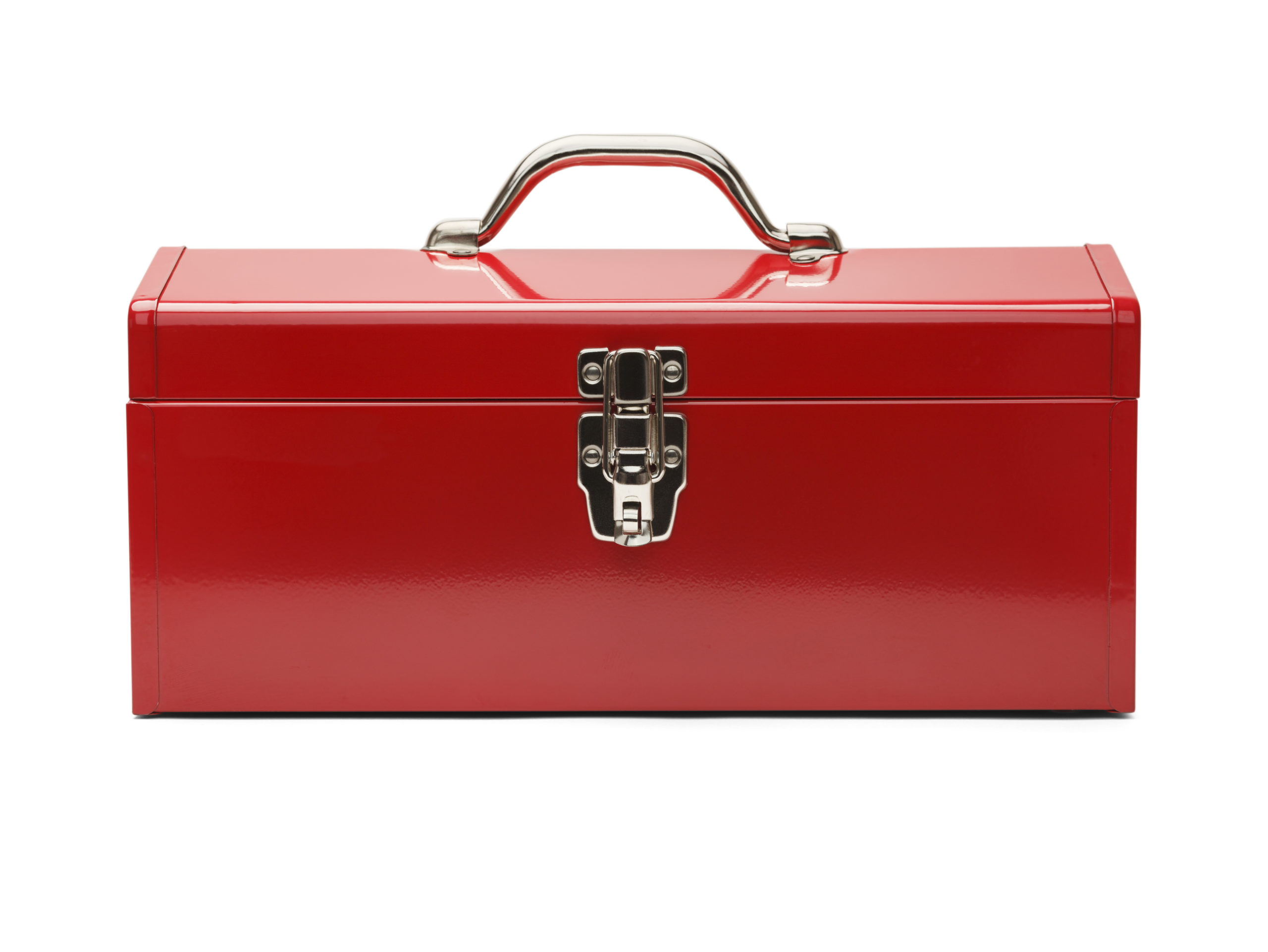
Tools of the Trade
- Treats: What good boy or girl doesn’t like a reward for a pawdicure? To make the process easier on everyone, have tiny treats on hand to reward your canine.
- Nail Clippers: With so many different sizes of dogs, you want to get a clipper that's suited for your pup. However, we recommend “scissor” type clippers. versus the "guillotine model." Similar to scissors, using a sharp nail trimmer is easier on your BFF and you. You can get them sharpened or replace your nail trimmers regularly.
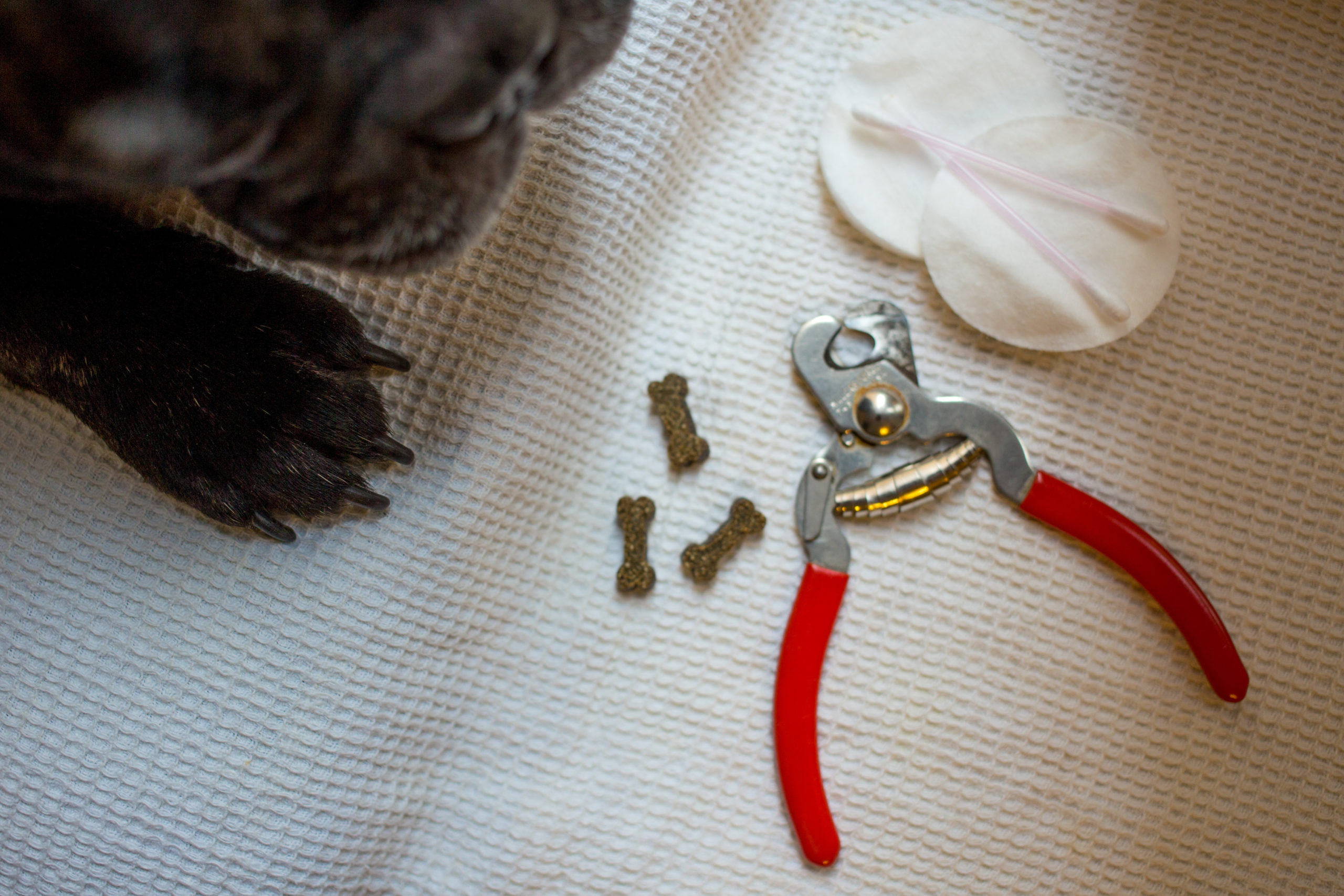
- Styptic powder or Cornstarch: As we mentioned earlier, dog toenails have blood vessels. If the nails haven’t been trimmed in a while, the blood vessel grows closer to the end of the toenail, increasing the chance you will nick “the quick” while trimming. When that happens, put a small amount of cornstarch or styptic powder in a clean, moistened cloth or paper towel. Next, wrap the cloth/towel around the nail, ensuring the powder/cornstarch is packed into the bleeding area. You’ll want to hold the towel/cloth in place for at least 30 seconds until the bleeding stops.
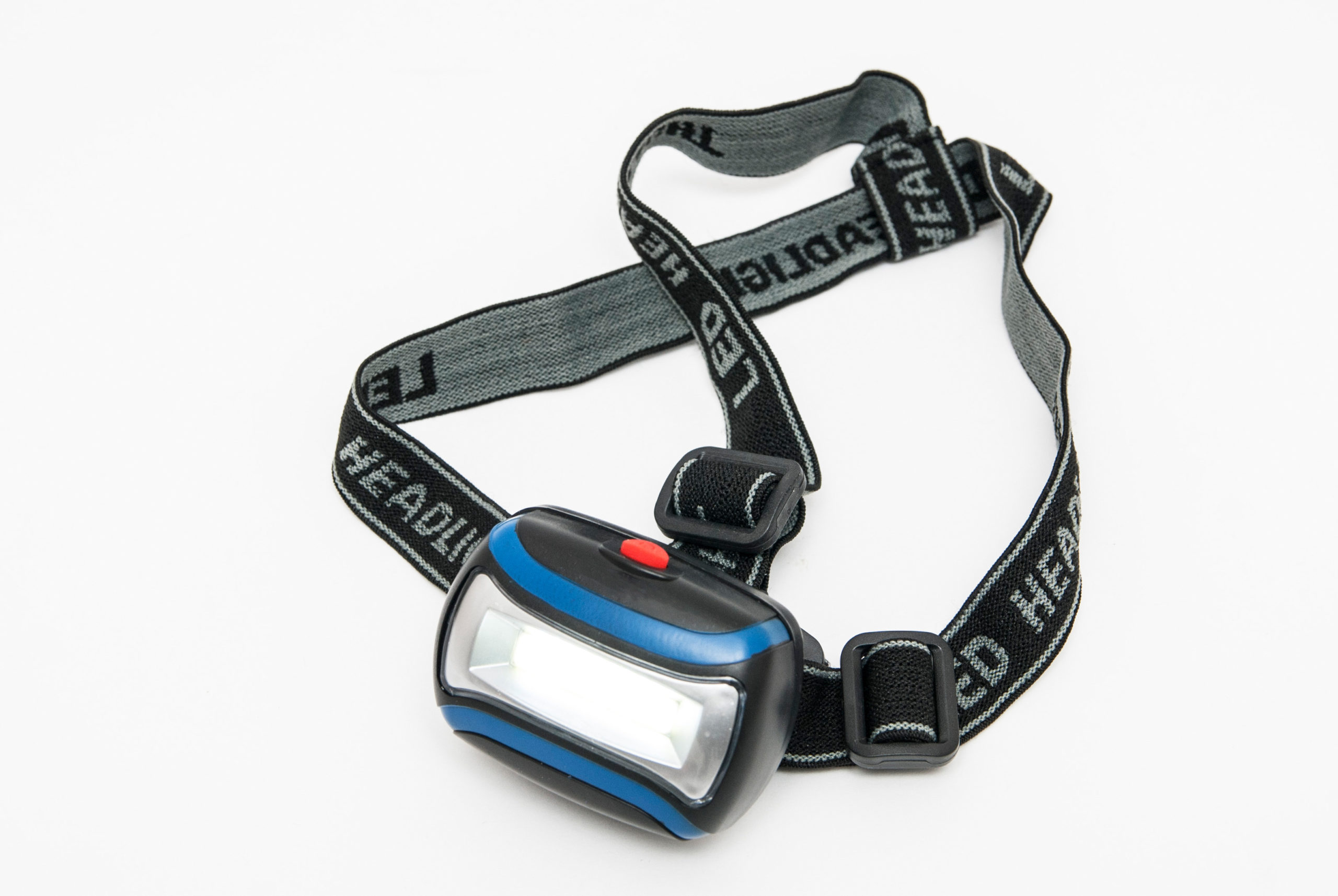
- Make sure you can see what you’re doing: Before you start trimming, make sure you’re in a well-lighted area either indoors or outside. An effortless way to ensure proper lighting is to use a headlamp. It doesn't have to be anything fancy; we already have them for hiking, crafting, and home repairs. If you have a hard time seeing up close or already wear reading glasses, make sure you're wearing them to trim nails too.

- Patience and a Pawsitive Attitude: Whether this is a new experience or a fresh start for you and your BFF, patience and pawsitivity are vital in getting off on the right paw. Rome wasn’t built in a day. Even if you can only do one nail per day, it’s a step in the right direction.

Let's Do This!
- Make it fun and relaxing: Just like at the hooman nail spa, pawdicures should be an enjoyable experience. Obviously, it’s best to start teaching your dog to relax during nail trims when they’re a puppy. However, if you have an adult dog who dislikes the process, it’s not too late to arrange a training intervention. You can teach an old dog new tricks!
- Get them used to the experience with a fresh, SLOW start: There are several different elements to nail trims: being restrained, having a paw touched, and the feeling of a nail being clipped. Also, a bad past experience — such as getting the quick clipped — can make future nail trims more difficult for you and your dog. Desensitizing older dogs to nail trimming takes patience. The process cannot be rushed. Monitor your dog’s response as you follow these steps and repeat steps if your dog has difficulty along the way.
As an example, dogs often have a negative association with clippers that have been used in the past, so switching to a new pair of clippers that are distinctly different is smart. When you first introduce them to the new clippers, have a gigantic puppy party the moment you whip them out. Take the clippers out from behind your back or somewhere hidden, and as soon as they see them, immediately begin rewarding with ample treats. Then put the clippers away and stop the flow of tasty snacks. Repeat as many times as it takes for your dog to understand that the presence of the clippers means that good things are going to happen.
In multiple separate sessions, you should repeat the same puppy party and treats process when you restrain your pup or touch their paws. Begin slowly and keep your dog relaxed; initially, this may mean only a light touch on your dog’s shoulder. Slowly progress while rewarding relaxation at each step. Either treat your pup with something special like licks of peanut butter from a spoon or have someone else dispense treats. Work down the leg toward the paw as long as your pooch remains relaxed.
Once you can touch the paw area, progress toward holding the paw with your hand. Next, work toward touching the paw pads under the toes with your other hand and eventually touching the nails. If your pup is still relaxed, add in a little pressure as you touch the nails, which will simulate what happens during nail trims.
When your pooch is readily allowing their nails to be touched, use one hand to hold their paw and another hand to use various objects to touch your canine's nails. When they’re comfortable with multiple objects touching their nails, use the new clippers to gently tap the ends of the nails without doing any clipping. If your dog remains comfortable, place the clippers over the nail without clipping. Reward your dog after each nail as long as they stay relaxed.
Up next is getting your dog used to the clipper sound when you squeeze them. Stand away from your dog, and press the clippers in your hand until they make a sound. Then it's reward time.
Now, combine holding your pup's paw and the sound of the clippers. Hold your dog's paw as you were previously doing, but this time keep the tool next to the nail and squeeze, so it makes the clipper sound. If at any time your dog becomes uncomfortable, go back a couple of steps and slowly progress toward using the clippers. - Trimming time: Once your dog can stay relaxed while you hold their paw and make the clipper noise near her, it's time to do the trim. Hold the paw as you were previously and clip one nail. Ensure to get only the very end of it as to avoid cutting the quick. Reward amply for your dog staying relaxed as you trim one nail, then take a break and come back later to do another nail. Once your dog is relaxed enough to let you trim one or two nails, you can gradually start trimming more nails in each session.
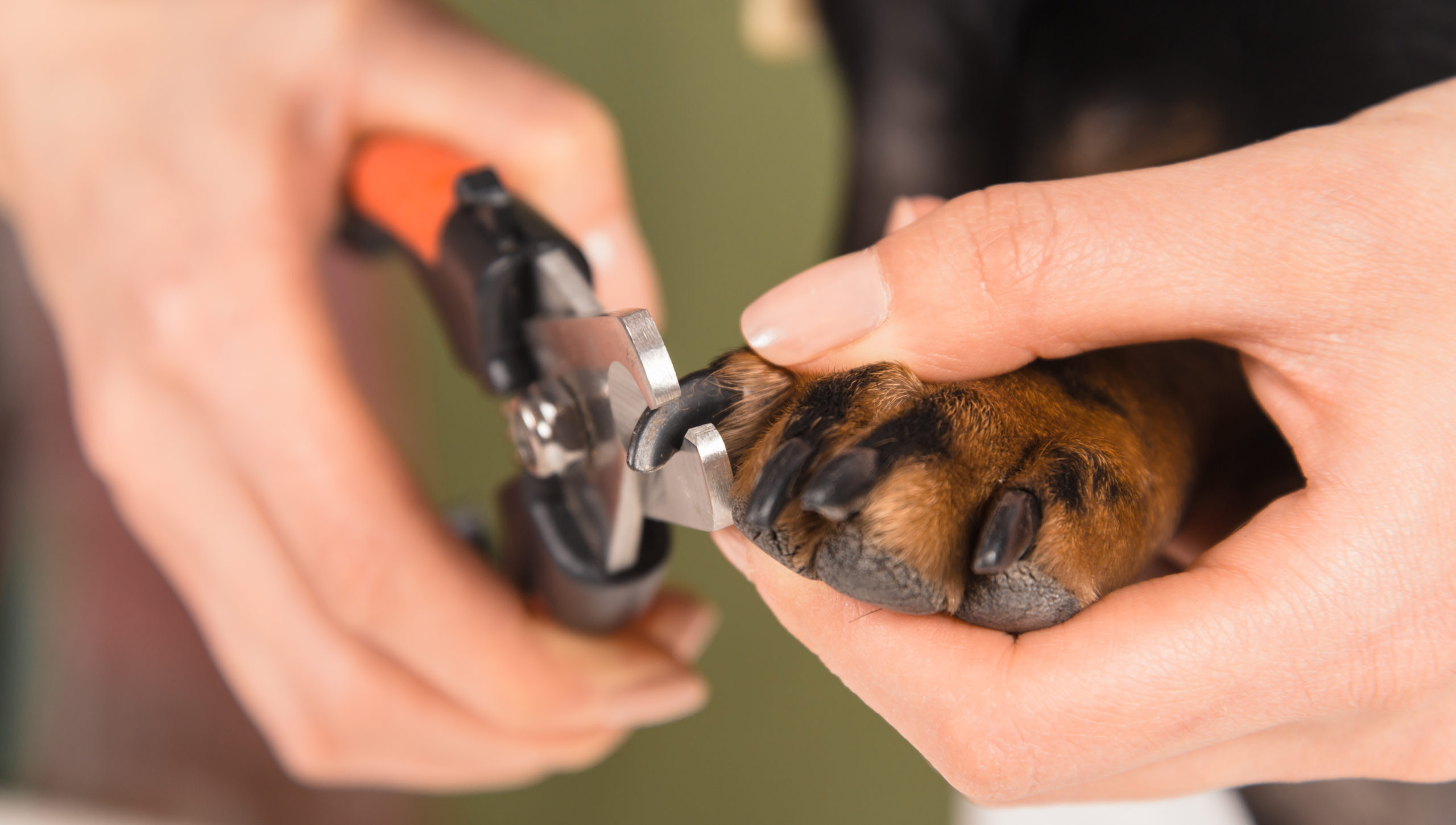
A Few More Tips
- Keep clipper blades almost parallel to the nail – never cut across the finger.
- Don’t squeeze the toes – that hurts!
- Use your fingers to separate the toes for clipping and hold the paw gently.
- If you nick the quick by cutting your dog's nail too short, give a yummy treat right away.
- For maintenance, cut every two weeks. To shorten, cut every week.
At the risk of sounding like a broken record, be sure to make nail trimming “quality time” you spend with your dog. Lots of kisses, lots of treats and a pawsitive attitude go a long way.
If your dog is still resistant to nail trims, talk with your vet or your groomer about other strategies. Additionally, share your training process with anyone who trims your pup’s nails to ensure your furbaby continues to have a pawsitive experience with nail trims.
Finally, if you have any questions or concerns, you should always visit or call your veterinarian. Vets are the best resource to ensure the health and well-being of your pets.
DISCLAIMER: The links and information are being provided as a convenience and for informational purposes only; they do not constitute an endorsement or an approval by Small Pet Select of any of the products, services or opinions of the corporation or organization or individual.



